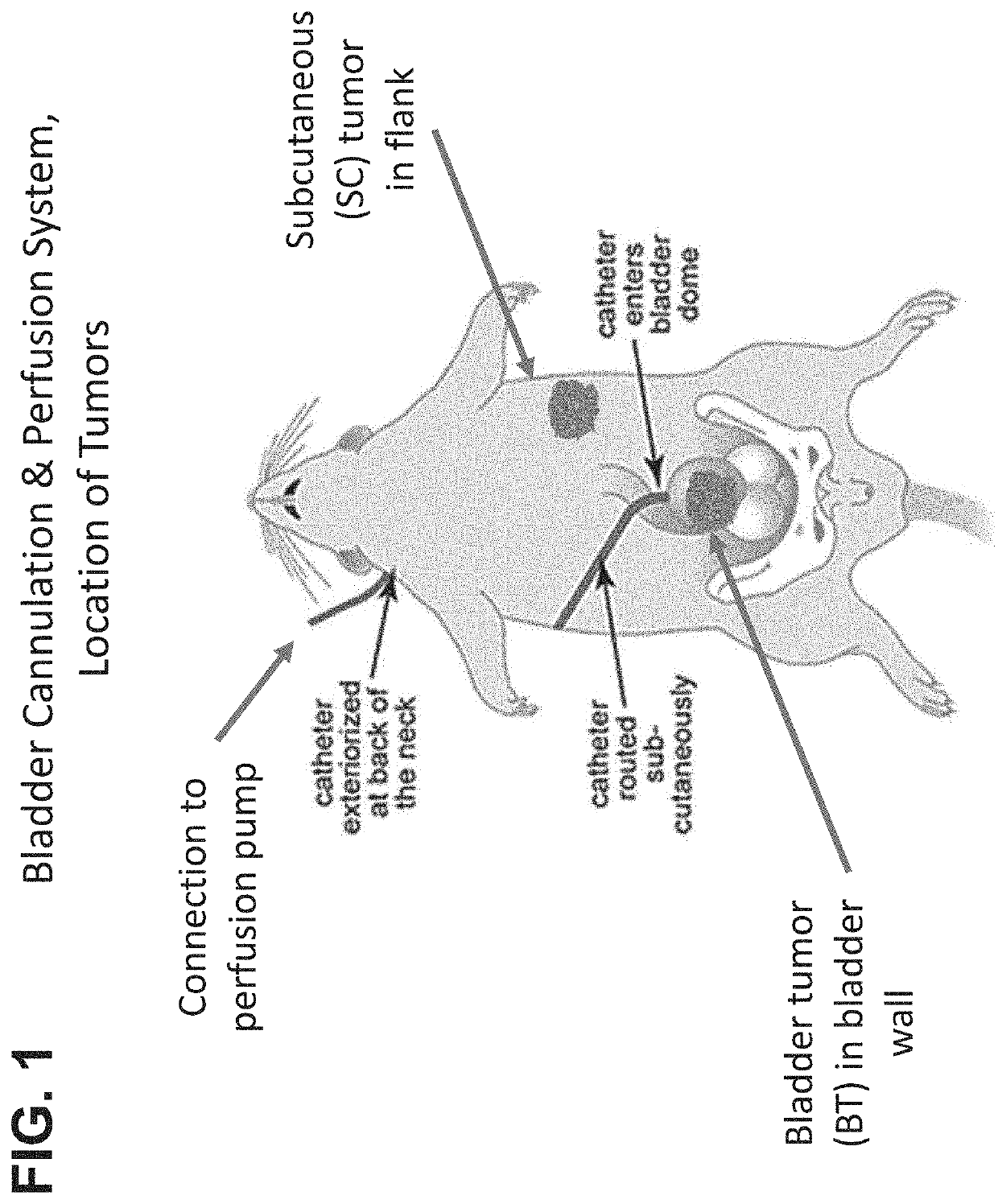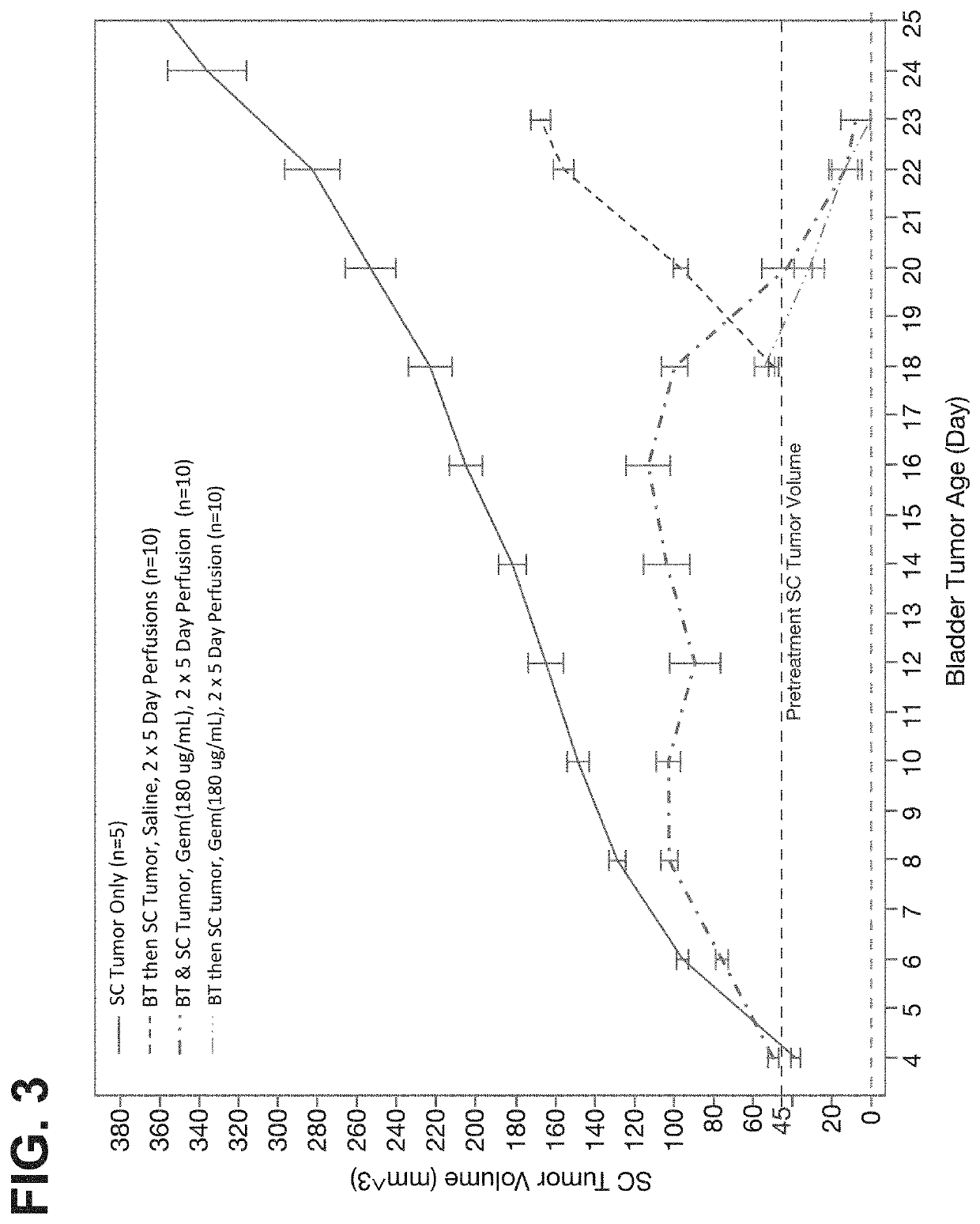Methods of treating tumor metastasis
a tumor metastasis and tumor technology, applied in the field of tumor metastasis treatment methods, can solve the problems of cancer patients' deaths, the effectiveness of currently available therapies for metastatic cancer is far from ideal, and the so as to suppress or delay tumor metastasis, and reduce the incidence or burden of preexisting tumor metastasis
- Summary
- Abstract
- Description
- Claims
- Application Information
AI Technical Summary
Benefits of technology
Problems solved by technology
Method used
Image
Examples
example 1
[0222]Standardized bladder perfusion system was modified to introduce bladder and subcutaneous tumors. The bladders were first surgically cannulated by placing a catheter into the bladder, fixed in place using a suture, the free end exteriorized between the scapulae.
[0223]The animals were allowed to heal. Bladder tumors were established by injecting tumor cell suspension directly into bladder wall. Subcutaneous tumor was established by injecting tumor cell suspension under skin abdominal flank.
[0224]The bladder and flank tumor model used in this study utilized immunocompetent Wistar rats, 7 to 8 weeks in age and weighing between 150 to 200 g. The bladders were first surgically cannulated by placing a P50 catheter into the bladder dome which was fixed in place using a purse string suture and the free end exteriorized between the scapulae. See FIG. 1. Upon recovery, the animals were able to freely move about in their cages and their health status was monitored daily. Per study protoco...
example 2
[0238]The direct effects of low dose gemcitabine were studied in athymic rats with human derived MIBC cells, T24-TurboFP635, injected into the bladder. After 3 days tumor growth, gemcitabine or vehicle was perfused into the bladder over 5 days, yielding nominal urine concentrations of 0, 20, 40, or 80 ug / ml gemcitabine, N=6 per group. Tumor bioluminescence was measured on day 5. A companion study in immunocompetent rats inoculated with syngeneic NBTII bladder tumors, provided tumors for immunocyte analysis.
[0239]In the athymic rats with T24 tumors, significant dose dependent reductions in bladder tumor bioluminescence of 47.6%, 70.5% and 91.2% vs control were observed in the 20, 40, and 80 ug / ml groups, respectively. Flow cytometric analysis of residual tumors recovered from immunocompetent rats with NBTII tumors demonstrated a significant decrease in the proportion of tumor T regulatory cells to T effector cells of 85.2%.
[0240]Gemcitabine immunogenicity was studied in immunocompete...
example 3
[0243]Extending the investigation described in EXAMPLE 1, additional studies of NBTII bladder and subcutaneous tumors evaluated the effect of varying gemcitabine bladder exposures with and without simultaneous bladder tumor implantation.
[0244]In one set of experiments, gemcitabine perfusion concentrations were varied to evaluate the effect of differing bladder tumor exposures on subcutaneous tumor growth rates. Bladder cannulated rats (n=10 per treatment group) with simultaneously implanted bladder and subcutaneous NBTII tumors were studied over two treatment cycles, each separated by a 7-day drug free period, as used in the EXAMPLE 1 study.
[0245]Gemcitabine perfusion concentrations of 45 μg / ml and 90 μg / ml were tested, producing nominal urine concentrations of 10 μg / ml and 20 μg / ml respectively, representing 50% and 75% reductions vs the original study gemcitabine urine concentrations. Subcutaneous tumor growth was measured during the study as previously.
[0246]As shown in FIG. 6, c...
PUM
 Login to View More
Login to View More Abstract
Description
Claims
Application Information
 Login to View More
Login to View More - R&D
- Intellectual Property
- Life Sciences
- Materials
- Tech Scout
- Unparalleled Data Quality
- Higher Quality Content
- 60% Fewer Hallucinations
Browse by: Latest US Patents, China's latest patents, Technical Efficacy Thesaurus, Application Domain, Technology Topic, Popular Technical Reports.
© 2025 PatSnap. All rights reserved.Legal|Privacy policy|Modern Slavery Act Transparency Statement|Sitemap|About US| Contact US: help@patsnap.com



